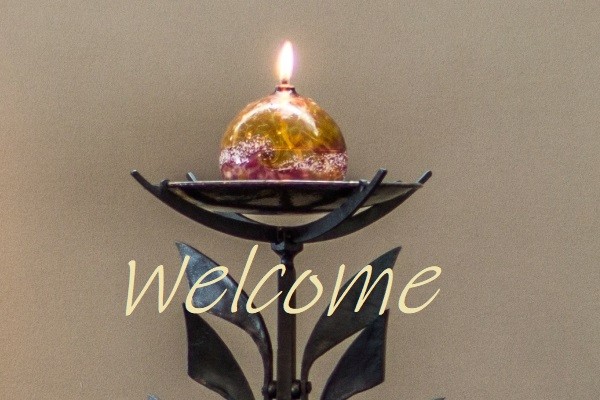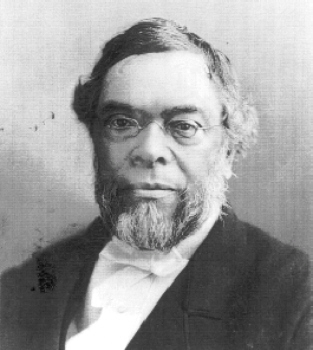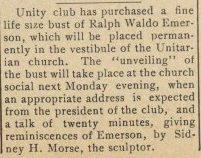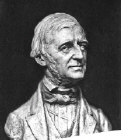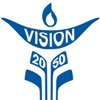WELCOME!
... To a faith with the power to transform lives and change the world. ... To a faith that can sustain and enrich the next chapter of your life.
Highlighted Events
Histories of Our Congregation
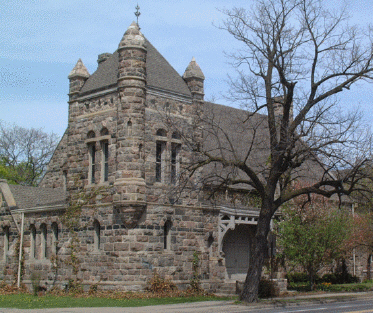 If you are interested in researching more about the history of our congregation, some of our documents are made available on this page. Much, much more information than you can imagine is archived in the University of Michigan Bentley Historical Library.
If you are interested in researching more about the history of our congregation, some of our documents are made available on this page. Much, much more information than you can imagine is archived in the University of Michigan Bentley Historical Library.
- "Our First 100 Years", an in depth history written by Marjorie Reade in 1990
- A history written by member Mavis Greene in 1965 for our 100th Anniversary
- The program (including history) for our 75th Anniversary Celebration in 1942
- A "Parish History" of the Ann Arbor Unitarian Church written in 1933
Other Historical Documents
Marjorie Reades unfinished history of First UU AA covering 1965-1980
Factoids: A collection of facts extracted from annual reports and board meeting archives by the hard work of Marion Holt and Eppie Potts.
The "Olney Letter": Infamous 1869 letter from Ann Arbor pastors and U of M faculty expressing their fear that the Unitarians might try to get "one of their own men" in as president of the university to spread the "peculiar notions" of Unitarianism.
1895 article from the Ann Arbor Argus about a memorial service held at our church for Frederick Douglass
Follow this link to the "Mini-Histories" presented during our 2014-15 150th anniversary year.
UUAA Ministry 1865 to Present
The Rev. Charles Henry Brigham, Minister from 1865-1877
Rev Brigham was the first minister of our congregation. He was known as an exceptional scholar and a powerful and convincing speaker. He was sent by the American Unitarian Association to Ann Arbor in large part to reach out to university students and mold the minds of the upcoming leaders of the West. He drew large numbers of students and townspeople alike to his sermons. One year his very popular Bible Study classes drew students from over 180 different towns and cities in 20 states. A friend speaking of Rev. Brigham after his death noted that over 30 of his students had become editors of secular journals; and "I have no doubt that the liberality of many such journals in the West is the natural outgrowth of this Bible class."
*Photo of Percy Dawson from the collection of the National Library of Medicine
Our Historic Buildings
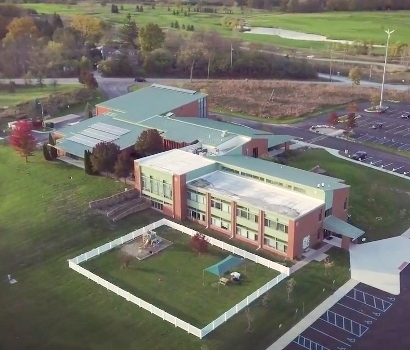 Aerial view of our current bulding at 4001 Ann Arbor-Saline Road.Our present building on the corner of Ann Arbor-Saline and Ellsworth Roads is the fourth home for the First UU congregation since its founding in 1865 as the First Unitarian Society of Ann Arbor.
Aerial view of our current bulding at 4001 Ann Arbor-Saline Road.Our present building on the corner of Ann Arbor-Saline and Ellsworth Roads is the fourth home for the First UU congregation since its founding in 1865 as the First Unitarian Society of Ann Arbor.
In 1867 The First Unitarian Society of Ann Arbor purchased and dedicated the old Methodist Church on the southwest corner of 5th and Ann Streets. In the Fall of 1882 the society moved into the Romanesque building they constructed on the corner of State and Huron, now occupied by Hobbs and Black Architects.
In 1946 the congregation purchased the Dr. Dean Myers family home and moved to the stone chalet (built in 1916) located at 1917 Washtenaw Ave, now serving as the Stone Chalet B&B. The congregation added a large addition to that church, designed by member and University of Michigan architecture professor George B. Brigham, in 1956.
Two of our buildings, the Hobbs and Black building and 1917 Washtenaw, are registered historic buildings.
We held our first service in our 4001 Ann Arbor - Saline Road location January 24, 1999. Our Religious Education Wing was dedicated November 14, 2004.
1866 - 1882 -- Fifth & Ann -- Our first church building had been a Methodist Church on the corner of 5th and Ann, later known as the "Unity Block". It was purchased shortly after our first minister, Charles Henry Brigham arrived in Ann Arbor. The buildings on this block no longer exist; they were demolished in the 1930s.
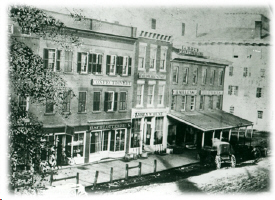
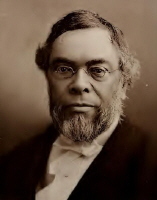
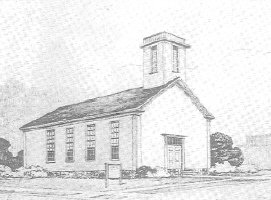
AADL photo of Ann Arbor in 1861
1882 - 1946 -- 100 N. State Street -- Jabez T. Sunderland, our minister from 1878 to 1898 raised money to build the lovely Romanesque church on the corner of State and Huron Streets that was completed in 1882. In 1884 a parsonage was built next door for the Sunderland family. Over the years the building had to be repaired and renovated numerous times until 1946 the diminished congregation could no longer afford to keep the building up and sold the building to the Grace Bible Church. When Grace Bible Church stopped holding services in the building, they ran a Christian bookstore on the main level of the parsonage, and University student church members lived on the second floor of the parsonage, using the church kitchen, fellowship hall, and sanctuary for meals and social events from 1975 through 1981. At some point, the City of Ann Arbor used the sanctuary for a basketball court! In 1985 the building was purchased by D. B. Associates Ltd who renovated it to become the offices for Hobbs & Black Architects.
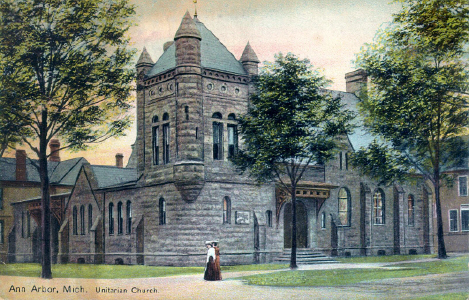
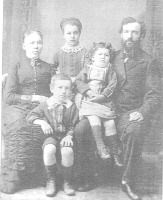 The Sunderland Family
The Sunderland Family 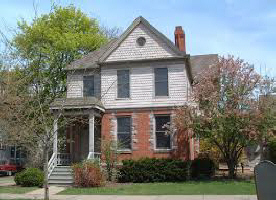
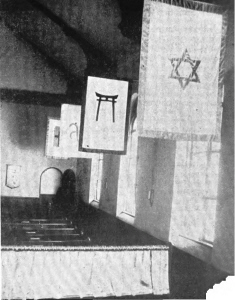 World Religion Banners lined the church
World Religion Banners lined the church
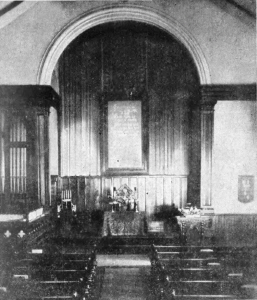
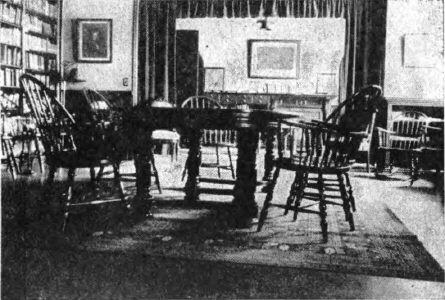 The Library in the State Street church. In the early years hundreds of university students used this library as a source for contemporary thought.
The Library in the State Street church. In the early years hundreds of university students used this library as a source for contemporary thought.
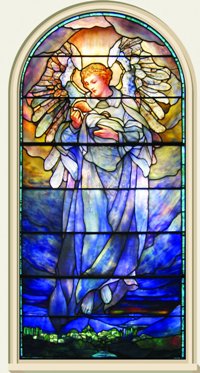
This Tiffany window was donated to the church by Mrs. Francis Crane Lillie as a memorial to a young congregant's child who died at birth in 1896. The window is copyrighted 1900. It shows a life size angel in the guise of a lovely young woman cradling an infant in her arms.
When the congregation moved out hastily in 1946, they turned the building over to the new owners without remembering the memorial window. Minister Ed Redman found out about it too late to retrieve the window from the new owners. Later after the building fell into disrepair, the window was boxed over and forgotten about. The owners of the Hobbs and Black company that purchased the church in 1985 were pleasantly surprised to uncover this treasure during their renovations.
Click on the YouTube video below to see a very interesting video recounting the Hobbs and Black renovation of our historic State Street Church, now reconfigured for their offices.
A bust of Ralph Waldo Emerson sculpted by Dr. Sidney Morse held a prominent place in the entryway of the State Street church. The bust also had an honored place in "The Emerson Room" in the 1917 Washtenaw Church until it took an unfortunate fall and could not be repaired. Sidney Morse spoke at the Unity Club in Oct, 1894 while a visiting professor at the University of Michigan.
The 1894 Ann Arbor Argus article at the right describes the acquisition.
1946 - 1999 -- 1917 Washtenaw Ave -- After leaving the State Street Church our congregation purchased the Dean Myers home. Soon after the move, the congregation began to grow quickly and an addition was added in 1956, designed by member and architect George B. Brigham.
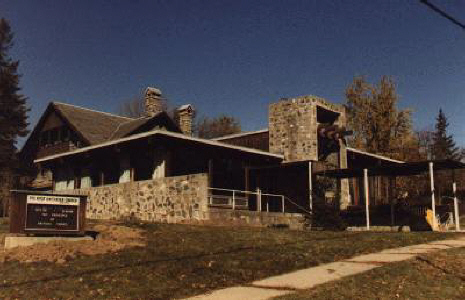 1917 Washtenaw Church view of Brigham addition
1917 Washtenaw Church view of Brigham addition
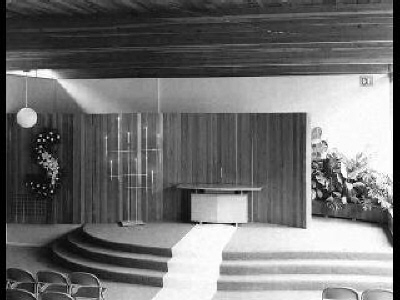 Sanctuary in 1957 with candelabra built by Rev Ed Redman
Sanctuary in 1957 with candelabra built by Rev Ed Redman
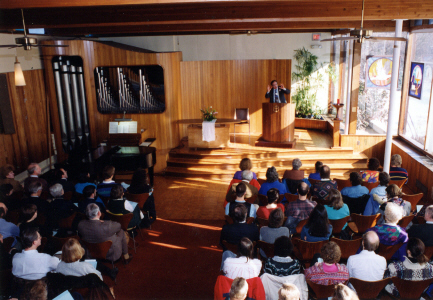 Sanctuary in the 1990s, Rev Ken Phifer preaching.
Sanctuary in the 1990s, Rev Ken Phifer preaching.
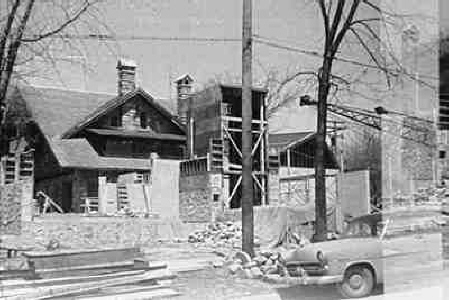 1956 addition under construction
1956 addition under construction
History
Our Story (History written in 2015, by Timothy F. Richards) | Our Ministers- Slide Show | Our Historic Buildings | Our 150th Anniversary (2014-15)
Additional materials on our history...
An Ann Arbor Tradition Since 1865
In the late 1800s the First Unitarian Society was well known in the Ann Arbor area for its reading room and lending library at a time when Ann Arbor had no public library. The church was known for bible classes catering to university students. Early Unitarians here worked to eliminate poverty and illiteracy among the American Indian population.
An early minister Jabez T. Sunderland and his wife Eliza Sunderland were very involved in religious and intellectual life 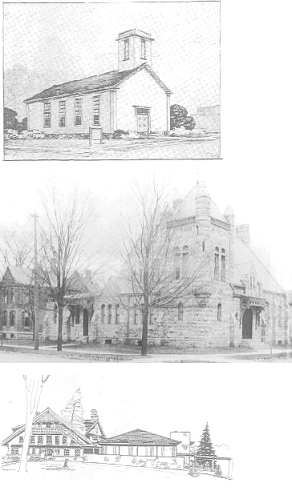 in the community. In 1896 Sunderland traveled to the Khasi Hills in India to establish ties with a group of Unitarians there. Our congregation continues this long relationship with the Khasi Hills Unitarians. In 1894 graduate students at the University of Michigan organized a petition to have women appointed to faculty and, in particular, to have Eliza Sunderland made Assistant Professor of Philosophy. Although the petition was not successful, she continued in an informal role at the university and became a nationally-known figure. She also spoke at the World Parliament of Religions in 1893, representing all Unitarian women of America.
in the community. In 1896 Sunderland traveled to the Khasi Hills in India to establish ties with a group of Unitarians there. Our congregation continues this long relationship with the Khasi Hills Unitarians. In 1894 graduate students at the University of Michigan organized a petition to have women appointed to faculty and, in particular, to have Eliza Sunderland made Assistant Professor of Philosophy. Although the petition was not successful, she continued in an informal role at the university and became a nationally-known figure. She also spoke at the World Parliament of Religions in 1893, representing all Unitarian women of America.
During the Great Depression minister Harold P. Marley had strong ties to the labor movement and a labor newspaper was published at the church. Early organizing meetings of the UAW were held at the church as well. During World War II Reverend Marley established a "Wayside Pulpit" in Ypsilanti to provide child care and playgrounds for children of families helping to build the Willow Run B-24 bomber plant. In 1933, congregant Roy Wood Sellars drafted the first version of the Humanist Manifesto, signed also by Rev Marley.
During the McCarthy Era in the 1950s, the First Unitarian Church provided a safe haven for liberal discussion and the minister, Ed Redman, was frequently called upon to testify on behalf of students and faculty members under investigation. In the sixties, minister Erwin Gaede was strongly committed to the civil rights movement and anti-Vietnam War groups.
In the 1980s and 1990s minister Kenneth W Phifer and members of the congregation supported gay/lesbian/transgender rights. In 1988, the congregation took in and for many years supported a Sanctuary family from El Salvador. During Dr. Phifer's ministry the congregation more than doubled its membership and in 1999 completed construction of the present church that has room to house the many activities of the UUAA community.
This congregation continues to play a vital role in the community by volunteering for Interfaith Hospitality Network (Alpha House), partnering with a coalition of churches to build Habitat for Humanity houses, playing a major role in the annual CROP Hunger Walk, providing food donations to local food banks, and collecting and sending books to a prison library program to name only some of our social justice projects..
 Click to see photos and information about our historic buildings...
Click to see photos and information about our historic buildings...

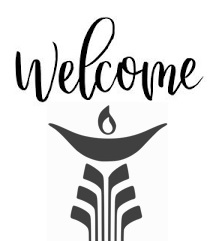 NEW TO UUAA?
NEW TO UUAA?